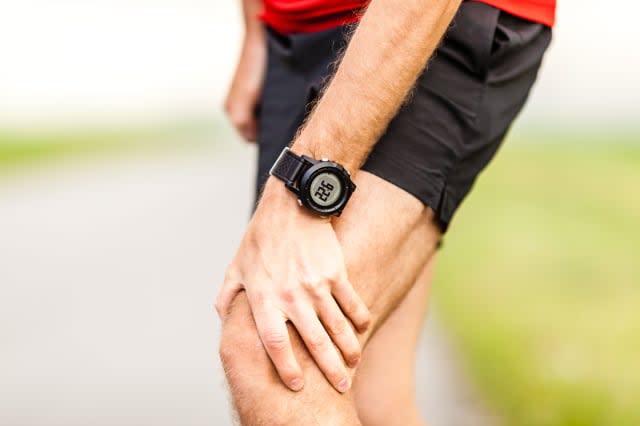How to soothe aching joints and muscles

Whether it's caused by sport or a day spent gardening or painting, aching muscles and joints can be a real problem, especially as you get older. Read on for tried and tested ways to ease the pain.
See also: Ten natural ways to ease arthritis pain
See also: How diet affects arthritis
Treating the ache
"When it comes to soothing muscle and joint aches, heat and cold are the two most common types of non-drug based options," says Boots Pharmacist Tom Kallis. "People are often confused about which one to use when they have an injury but it's fairly simple to assess - it depends on whether the pain is new or recurring.
"Generally, a new injury will cause inflammation and possibly swelling. Frozen peas – or ice – wrapped in a teatowel will decrease the blood flow to the injury, which decreases inflammation and swelling.
"If your pain is recurring, applying heat will bring blood to the area and promote healing. If you're still not sure, or your aches starts affecting your daily routine, speak to your pharmacist who can advise on the best forms of treatment for you."
When to use heat
You'd be amazed how a day of gardening or painting can use muscles you didn't know you had. Even if you're a seasoned gardener, putting your back into it can sometimes result in putting your back out!
A heat pack can help to soothe the pain and improve movement. A Hot/Cold Compress (£6.99) will help to reduce swelling and can be moulded when hot or cold to fit the shape of your body. You may also want to try Boots Warming Body Heat Wrap (£12.99), which is suitable for joints and muscles. Microwaveable in minutes, it provides gentle warmth and ceramic beads conform to the body.
A hot water bottle is another option - just make sure it has a cover before you place it on the skin. If you have diabetes or a circulation problem it can make it harder to feel pain, so be careful not to burn yourself. Never apply heat to a joint that is red, hot or swollen.
If you feel you need more support for well-worn muscles, you could try a muscle pain relief cream (35g, £2.25) which provides effective warming relief and is suitable for muscular and rheumatic pain, as well as minor sports injuries.
When to use cold
If your joints are red, hot or swollen, a cold pack can reduce swelling and numb pain, making it a good choice when an arthritis flare-up first starts or joints become inflamed. It's also a good choice for acute injuries such as sprains or pulled muscles.
Try using a gel-filled ice pack or a packet of frozen peas. To avoid ice burns, wrap it in a towel before applying to your skin. If the skin turns red or becomes numb, remove it immediately. Don't apply for more than 20 mins at a time, and don't use on skin that has cuts or sores.
Alternatively, you may wish to try Boots freeze spray (150ml, £3.19) which helps soothe and relax muscles and joints.
Help to support tired limbs
Before you start any exercise – be that gardening or a jog round the block – you should always warm up to prevent strain and injury. Stretching properly afterwards will also help reduce aches and pains.
Wearing an adjustable knee support (£17.99) can help to reduce swelling caused by sprains, strains or sports injuries and helps to prevent further injury. It also supports weak, arthritic or injured knees.
Over-the-counter pain relief
If you have a minor injury that is painful for the first few days, you may want to consider taking an over-the-counter painkiller such as paracetamol or ibuprofen. If your joint or muscle pain gets worse or doesn't improve with rest, see your GP.



